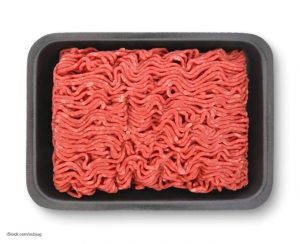The North American Meat Association (NAMA) held its Pathogen Control and Regulatory Compliance in Beef Processing conference last week, and reported on the foodborne disease outbreaks that are attributed to meat. Meatingplace.com says that Hannah Gould of the CDC’s National Outbreak Reporting System reported on the data. According to the data, about 9% of foodborne illness outbreaks in the U.S. are attributed to beef; 9% to chicken; and 7% to pork.
 Between 2009 and 2013, of the illnesses linked to beef, 35% involved E. coli O157:H7 and 23% were caused by Salmonella. And between 2003 and 2012, 55% of all E. coli outbreaks attributed to food were associated with beef consumption. Of those outbreaks, 69% were from ground beef, 14% from steaks and 17% from other beef products.
Between 2009 and 2013, of the illnesses linked to beef, 35% involved E. coli O157:H7 and 23% were caused by Salmonella. And between 2003 and 2012, 55% of all E. coli outbreaks attributed to food were associated with beef consumption. Of those outbreaks, 69% were from ground beef, 14% from steaks and 17% from other beef products.
This highlights the fact that consumers and restaurants need to cook ground beef to well done, or 165°F to kill pathogenic bacteria. Of the E. coli O157:H7 outbreaks associated with beef, 56% of the meat was cooked at home, and 24% was cooked at a restaurant, deli, or banquet facility. Anywhere from 11 to 28% of the U.S. population eats ground beef raw or undercooked, according to Gould.
Salmonella is the most common cause of foodborne illnesses in this country, according to the CDC. Between 1973 and 2011, there were 94 Salmonella outbreaks associated with beef that caused 3,643 illnesses. The outbreaks used to be linked to beef roasts; now they are linked to ground beef. And hospitalizations of those sickened by Salmonella in beef jumped from 9% in the 1970s to 23% today, because of antibiotic resistant bacteria caused by antibiotic use on factory farms.
Consumers and food handlers must be educated about safe handling and cooking beef. Mechanically tenderized beef, which was responsible for five E. coli O157:H7 outbreaks from 2003 to 2012, must be clearly and properly labeled with cooking instructions, and antibiotic use must be curbed.




